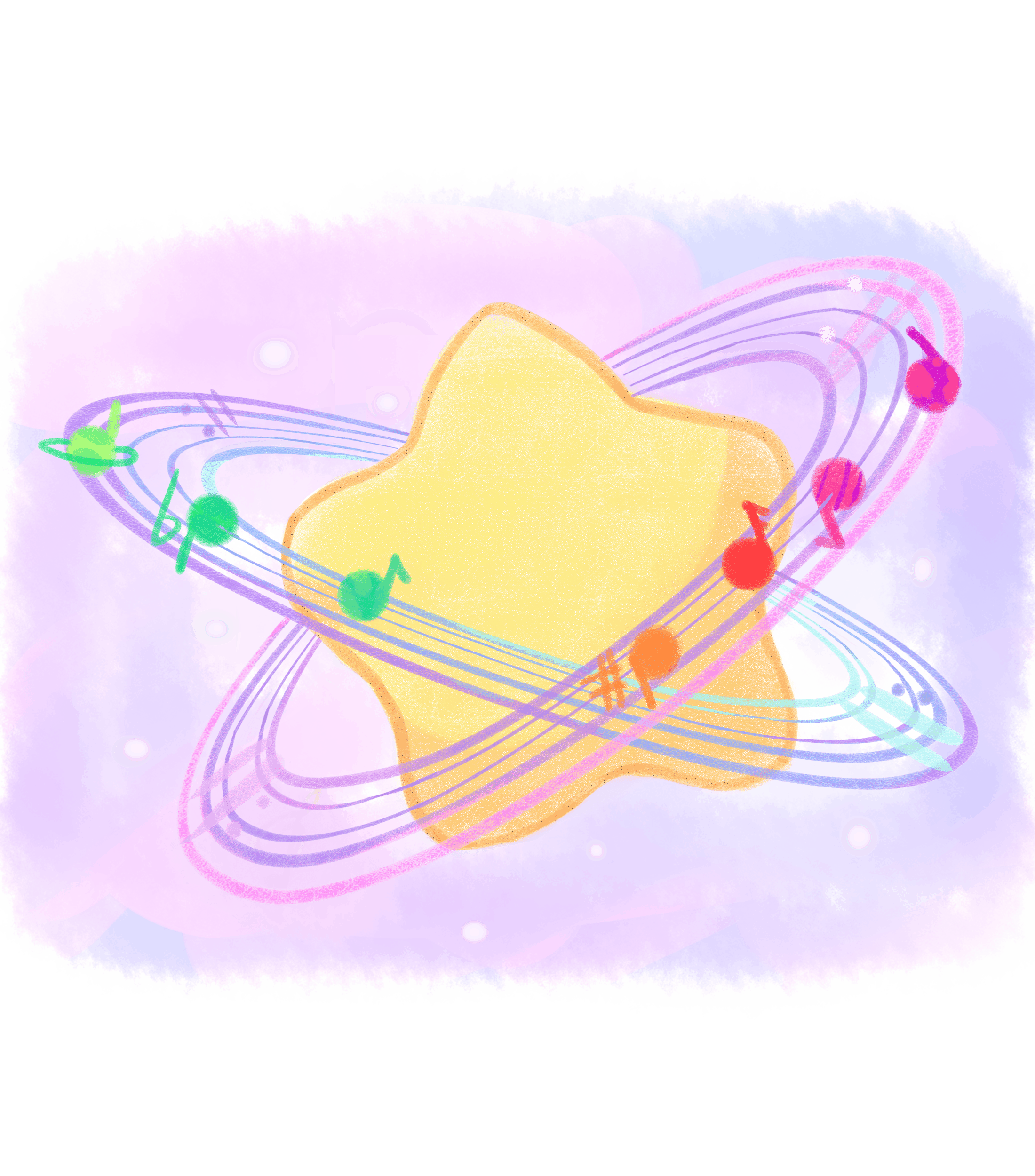American poet Henry Wadsworth Longfellow once described music as “the universal language of mankind.” The discovery of the TRAPPIST-1 solar system takes this a step further by demonstrating how the characteristics of what we have come to know as music exists even beyond the Earth’s atmosphere.
TRAPPIST-1 is a red dwarf star, recently discovered to have seven Earth-sized planets that orbit it. Astronomers have noted that several of these planets maintain a temperature that can sustain liquid water, indicating that living forms may potentially exist outside our solar system.
However, a simulation of orbital paths has depicted the collision of TRAPPIST-1’s seven exoplanets as a result of planetary “jostling” by gravitational waves.
In reality, this does not happen. But what exactly keeps the exoplanets from being reduced to clouds of dust? It turns out that the seven planetary orbits follow a chain of resonances and has set the record for the longest chain discovered to this day.
Dr. Matt Russo, a postdoctoral fellow at the Canadian Institute for Theoretical Astrophysics, remarks that the orbit size of these exoplanets follow whole number ratios, such as 3:2 and 4:3, similar to the basis of musical harmony as discovered by Pythagoras. “By taking the actual orbital frequencies and scaling them into the human hearing range, TRAPPIST-1 produces a lush harmonious chord which is strangely familiar,” says Russo.
To illustrate the movement of these seven planets, the orbital frequencies of each planet were scaled up within the human range of hearing. In the musical animation they have created, a corresponding note plays each time a specific planet completes an orbit around the TRAPPIST-1 star. A percussion sound indicates that a planet has caught up with a neighbouring planet in their respective orbits, and differs depending on the pair of planets in question.
It is important to point out that tidal forces slowly detune orbits since the planets interact closely with each other. Consequently, orbit sizes are not exactly whole number ratios, but roughly so, resulting in notes that are slightly out of tune.
Resonance may allow musical harmony, but it can either cause planetary systems to be in chaos or allow for stability. Dr. Daniel Tamayo, a postdoctoral fellow at the University of Toronto’s Centre for Planetary Science, says that along with orbit size, parameters like orbital shape and the orbits’ orientation relative to each other, are also crucial.
Tamayo describes the TRAPPIST-1 system as an orchestra, in which keeping time, or resonance, is not enough to guarantee stability. “If they don’t also tune their instruments to one another beforehand, there won’t be any harmony,” Tamayo adds.
However, these additional orbital parameters are difficult to determine, which may have been why the initial simulations failed. Tamayo and his colleagues began to look back in time to examine how the system may have formed. Planets are born through disks of gas and dust. Incredibly, these planets start moving relative to each other as they form and interact.
“If this process is gentle enough, then planets can naturally tune all their orbital parameters to one another,” Tamayo explains, “just like the orchestra does before a symphony.”
The creation of harmonized systems was made possible by this fine tuning on top of TRAPPIST-1’s chain of resonances. As a result, simulations that once predicted collision began to depict the survival of the majority of these systems. Resonance may keep the system together, but it is the fine tuning of the system that prevents its destruction.
The TRAPPIST-1 system is unique in that it can be translated into music. Resonance is rare among solar systems; most systems can only produce a chaotic blend of notes and beats once translated.
An example of this would be Kepler 90, which also has seven planets. However, since the Kepler 90 system does not have planets in resonance, the system cannot produce harmonious music. Russo notes that even our own solar system fails at doing so and can only create “many dissonant sounds and shifting, uncomfortable rhythms.”
But what makes the TRAPPIST-1 different from “non-musical” solar systems? This may all depend on the turbulence of the initial disks that the planets were created from. “It seems that the disk that the TRAPPIST-1 planets formed out of was relatively calm so that the planets could slide into this stable resonance,” says Russo, “Most disks are probably too turbulent to let planets stay in such a pattern.”
There remain numerous unanswered questions surrounding the TRAPPIST-1 system, but discovering music in space is one small step for mankind towards uncovering the mysteries of the universe.


